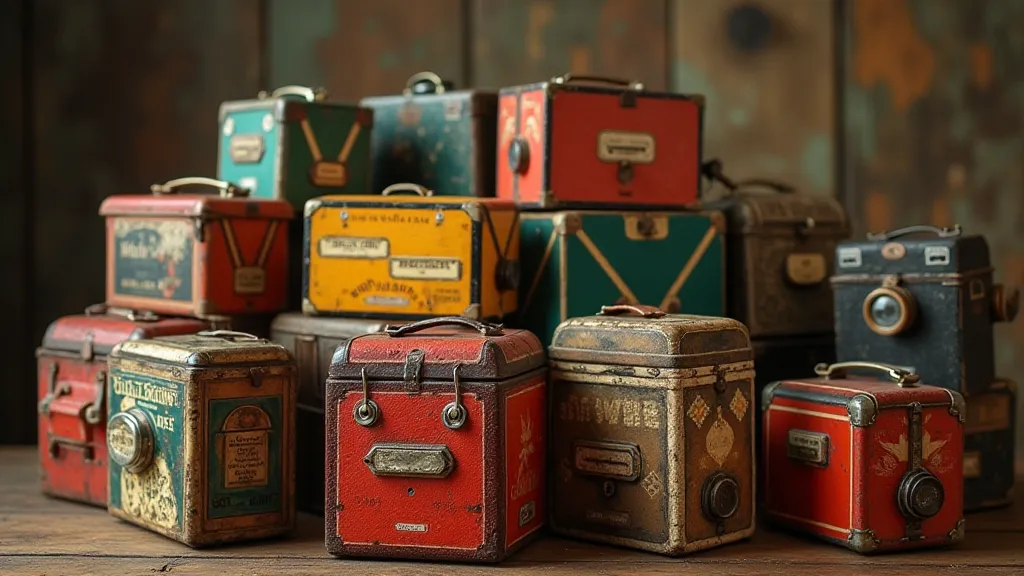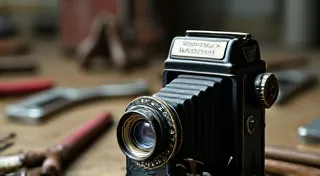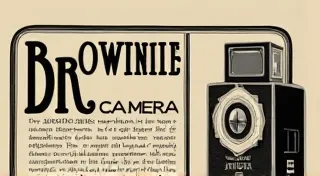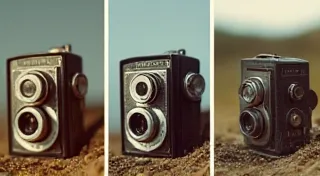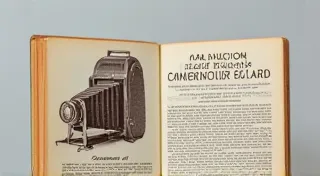Finding Brownie Cameras: Auction Tips & Best Practices
For camera collectors, the thrill of the hunt is often as rewarding as the acquisition itself. When it comes to vintage Brownie cameras, that pursuit can be particularly exciting – and occasionally challenging. While general vintage camera collecting has its own intricacies, focusing on the Brownie line requires a bit more specific knowledge and strategy. This article provides guidance on navigating the world of auctions and online marketplaces to successfully source these beloved pieces of photographic history.
Understanding the Brownie Landscape
Before you even start browsing auction listings, familiarize yourself with the Brownie camera range. Kodak produced a huge variety of Brownie models, each with its own quirks, production years, and variations. Knowing the differences between a Brownie Detective, a Brownie Reflex, or a Brownie Starflex will help you discern value and condition. Researching specific models – their original price, common issues, and desirable features – will allow you to bid with confidence. If you're just starting out, you might find A Beginner's Guide to Brownie Camera Models helpful in familiarizing yourself with the broad range.
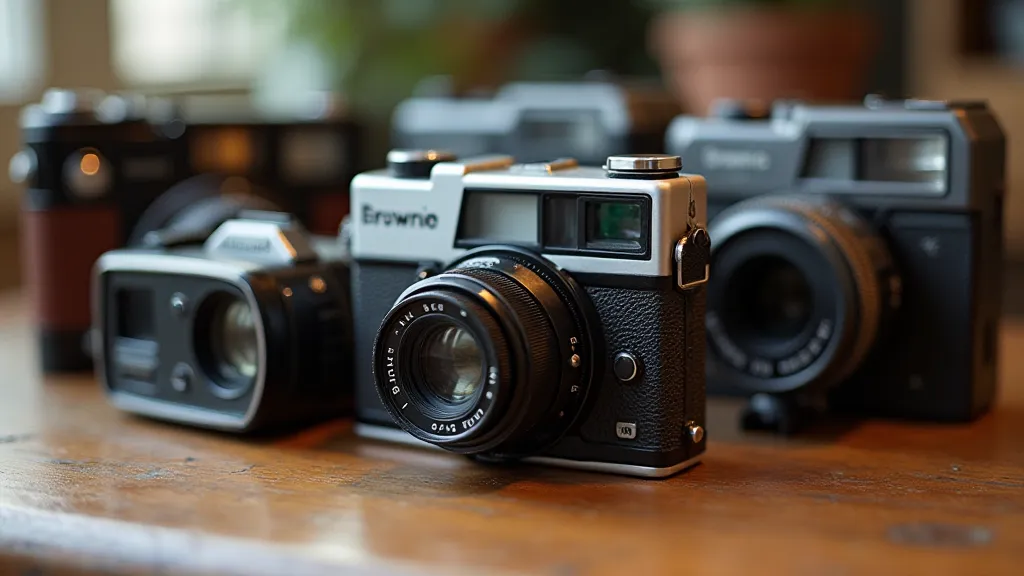
Auction Strategies: Bidding with Knowledge
Auction houses and online auction platforms are goldmines for vintage cameras. However, they also require a different approach than simply browsing online marketplaces. Here's a breakdown of strategies:
- Research the Auctioneer: Some auctioneers specialize in antiques and collectibles, while others are more general. Understanding their expertise (or lack thereof) can influence your expectations and due diligence.
- Examine the Catalog: Read the descriptions carefully. Pay attention to any mentions of missing parts, damage, or functionality issues. Look for close-up photos that show condition details.
- Condition is Key: Brownie cameras are often sold "as-is." A camera that's been well-cared for, even if it hasn’t been tested, is generally a better investment than one with obvious damage or missing components.
- Set a Budget & Stick To It: The excitement of bidding can lead to overspending. Determine your maximum bid *before* the auction begins and resist the urge to go beyond that number.
- Understand Auction Jargon: Terms like "lot number," "estimate," and "hammer price" are common. Familiarize yourself with them to avoid confusion.
- Don't Be Afraid to Pass: There will always be another opportunity. Don't get caught up in a bidding war for a camera that isn't truly worth it.
Online marketplaces like eBay and specialized camera forums offer a broader selection and often more competitive pricing than auctions. However, they also present their own set of challenges:
- Seller Reputation is Crucial: Check the seller's feedback rating and read reviews carefully. Look for sellers with a track record of accurately describing items and providing good customer service.
- Detailed Descriptions and Photos are Essential: Insist on clear, detailed descriptions that accurately represent the camera's condition. Ask for additional photos if necessary.
- Ask Questions! Don't hesitate to contact the seller to ask specific questions about the camera's functionality, originality, or any concerns you may have.
- Beware of "Frankencameras": A "Frankencamera" is a camera assembled from parts from multiple models. While they can be interesting, they’re often less desirable than original, complete cameras. These often require extensive restoration work – a topic explored in more detail in Restoring a Brownie Camera: A Step-by-Step Guide.
Specific Brownie Considerations
When it comes to Brownie cameras, certain factors can significantly impact their value:
- Original Box and Paperwork: A camera in its original box with the original instruction manual and advertising material is *much* more valuable than a bare camera. The presence of original accessories like filters and cases can also dramatically increase the value; for those interested in learning more, see Collecting Brownie Camera Accessories: Filters, Cases, and More.
- Rare Variations: Some Brownie models had limited production runs or unique features that make them highly sought after by collectors. Identifying these variations requires careful study and attention to detail.
- Working Condition: While many vintage cameras are collectible even if they don't function, a Brownie camera that is fully operational is generally more desirable. However, *always* prioritize originality and completeness. Don't be afraid to tackle repairs yourself, but remember that improperly handled restoration can easily decrease value.
- Post-War Models: Brownies produced after World War II often have a slightly different feel and are generally less desirable to collectors compared to pre-war models. This is often due to changes in manufacturing techniques and materials.
The allure of vintage Brownie cameras extends far beyond the cameras themselves. Many collectors become equally fascinated by the associated accessories—original cases, filters, straps, and even promotional materials. These items, often as rare and historically significant as the cameras, can complete the picture and significantly increase a collection’s value.
Troubleshooting Common Issues and Preservation Techniques
Even with the best care, vintage Brownie cameras can develop issues. Sticky shutters, light leaks, and damaged bellows are all common problems. Understanding how to diagnose and address these issues is crucial for preserving the value and functionality of your collection. Learning how to properly clean and lubricate the camera's internal components is vital. Furthermore, knowing how to address issues like light leaks, which can often be corrected with careful sealing, can save a cherished piece of history.
The Value of Originality and Completeness
In the world of vintage camera collecting, originality reigns supreme. A Brownie camera that retains all of its original parts and markings is significantly more valuable than one that has been modified or repaired with non-original components. The same principle applies to accessories—original cases, filters, and manuals are highly prized. Be wary of “Frankencameras,” which are cameras assembled from parts from multiple models. While these can be intriguing, they typically lack the same level of value as complete, original cameras.
The Ever-Changing Market
The vintage camera market is dynamic, with values fluctuating based on trends, scarcity, and collector demand. Stay informed about recent sales and auction results to gauge the current market conditions. Online forums and collector communities are invaluable resources for staying up-to-date on the latest developments.
Final Thoughts
Collecting vintage Brownie cameras is a rewarding hobby that combines history, photography, and a bit of detective work. By following these tips and doing your research, you can increase your chances of finding the Brownie cameras you’ve been searching for and adding them to your collection.
